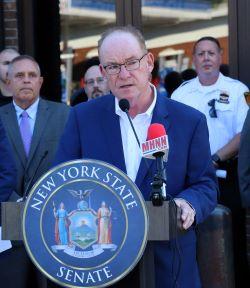by State Senator Rob Rolison
Most of us have had the unpleasant experience of being subjected to someone else’s reckless driving. There you are: trapped in a lane, your antagonist tailgating behind you, weaving in and out, attempting to pass. It’s usually an irritating, though fleeting, experience, forgotten by the time we pull into our parking space at the grocery store.
However, the consequences of the Covid-19 pandemic – with fewer cars on the road and wide-open spaces to drive – appears to have permanently shifted some motorists’ behavior for the worse. This cultural transformation has been abetted by lax enforcement. As the New York Times described it in a major 2022 article: “Many cities also curtailed enforcement, closed DMV offices and offered reprieves for drivers who had unpaid tickets, expired drivers’ licenses and out-of-state tags.”
In 2024 it’s no exaggeration to argue that reckless drivers are fast turning our roads into speedways. The National Highway Traffic Safety Administration has rightly called the uptick in traffic-related fatalities a “crisis.” What can be done?
Let’s first recognize the difference between casually negligent and reckless driving. Examples of the latter are speeding, weaving or unsafe lane changes, tailgating, and impaired driving. Reckless driving can also be off-roading or taking unlicensed, unregulated motorcycles and off-road vehicles like ATVs on roads, especially those with high levels of foot traffic.
The major difference between careless and reckless driving, however, is that reckless driving is more statistically certain to result in devastating injuries and death. In New York State, reckless driving may be charged as a misdemeanor or a felony. Too many cases end up with the motorist being issued a citation he may or may not acknowledge – and no discretion for a judge to compel him.
Some planners and anti-car urbanists argue our public roads are “dangerous by…
Read the full article here

Leave a Reply